
Picture this: you're managing a construction project and need a method that marries efficiency with precision.
DTH drilling offers remarkable penetration rates and precise, straight holes, adapting seamlessly to various ground conditions, making it perfect for foundation drilling. Its outstanding efficiency and accuracy ensure your project has a solid, reliable foundation.
When I first stumbled upon DTH drilling in my projects, I was intrigued by its promise of speed and precision. Imagine drilling straight and accurate holes with minimal fuss—it's like having a secret weapon on your construction site. Beyond just getting the job done quickly, DTH drilling's real magic lies in its versatility and cost-effectiveness. It's like having a Swiss Army knife for your foundation needs, ensuring stability without breaking the bank. Let’s dive deeper into how this method can truly elevate your project outcomes.
DTH drilling is ideal for all ground conditions.False
DTH drilling is versatile but may not be ideal for very soft soils.
DTH drilling enhances project cost-effectiveness.True
Its efficiency and precision reduce time and material wastage.
How Does DTH Drilling Improve Project Efficiency?
Ever had a project where time seemed to slip through your fingers? Enter DTH drilling, a game-changer in the drilling world.
DTH drilling boosts project efficiency with fast penetration rates, precision across ground conditions, reduced downtime, and cost-effectiveness. Its uninterrupted drilling process and minimal vibration suit complex projects perfectly.
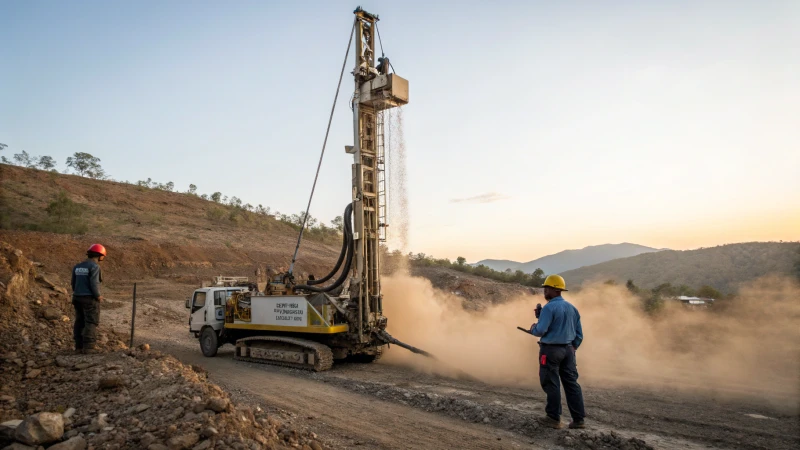
I remember my first major project—tight deadlines and all. I was constantly on edge, worrying about the ticking clock. That's when I discovered the magic of DTH drilling.
High Penetration Rates
DTH drilling is like having a superpower in the world of rock formations. Its high penetration rates are perfect for when you're racing against time. It's not just about making holes faster; it means wrapping up the entire project sooner.
| Feature | Benefit |
|---|---|
| High Penetration | Faster completion of drilling |
| Consistent Speed | Predictable project timelines |
Precision and Accuracy
I can't stress enough how crucial precision is. DTH drilling ensures those holes are straight and true, maintaining structural integrity like a pro. No more worrying about wobbly foundations or unnecessary wastage.
- Straight Hole Drilling: Essential for foundation stability1.
- Consistent Diameter: Facilitates uniform installation of piles.
Versatility in Ground Conditions
I've faced all sorts of ground conditions—it's like each project has its own personality. DTH drills handle everything from soft soil to hard rock without a hiccup, meaning fewer stops and adjustments.
- Varied Terrain Handling: From soft soil to hard rock2.
- Reduced Vibration: Minimizes impact on surrounding structures.
Cost Efficiency
Budget overruns? Not on my watch! DTH drilling keeps costs down with durable bits and minimal maintenance. It's not just efficient; it's economically smart.
- Durable Drill Bits: Long-lasting, reducing downtime costs3.
- Minimal Maintenance: Simplifies logistics and reduces unexpected expenses.
Continuous Drilling Process
Unlike other methods that stop and start, DTH drilling just keeps going. This continuity is a lifesaver when you're juggling tight schedules.
- No Frequent Stops: Ensures seamless workflow.
- Efficiency Boost: Directly impacts project timelines and productivity.
Each of these elements comes together to make DTH drilling a revolutionary force in the field. It's transformed the way I approach projects, turning challenges into opportunities for success.
DTH drilling provides faster completion of drilling tasks.True
Due to high penetration rates, DTH drilling reduces overall drilling time.
DTH drilling requires frequent maintenance and bit changes.False
DTH drilling minimizes maintenance needs and reduces downtime costs.
Why is precision crucial in foundation drilling?
Ever felt the ground beneath your feet rumble as a skyscraper rises? That's the magic of precision in foundation drilling.
Precision in foundation drilling is crucial because it directly impacts structural integrity, safety, and cost-effectiveness. Accurate drilling ensures that foundations are strong, durable, and aligned with engineering specifications, preventing potential structural failures.
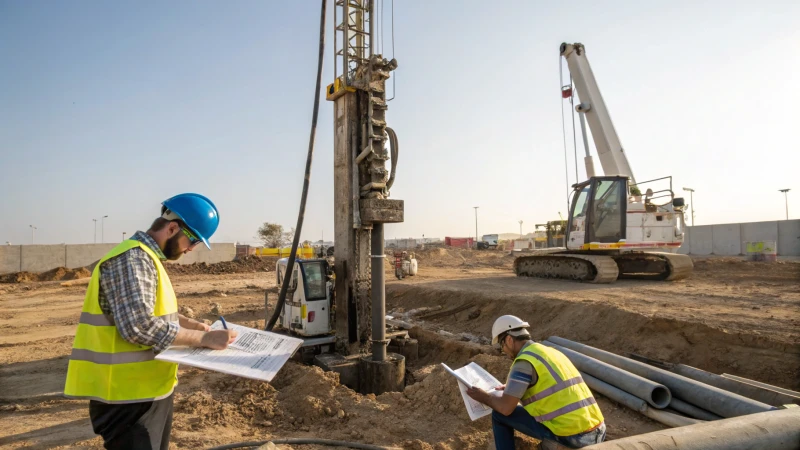
The Role of Precision in Structural Integrity
Picture this: you're standing on a newly constructed bridge, marveling at its grandeur. But what if I told you the secret to its sturdiness lies beneath your feet? Precision in foundation drilling aligns with engineering blueprints like a well-orchestrated symphony. A misaligned hole could be the sour note that leads to structural weaknesses, and nobody wants a shaky bridge.
Importance of Straight Holes
I remember the first time I saw a perfectly straight drill hole—it was like peering into a well where everything just aligned perfectly. Straight holes aren't just visually satisfying; they ensure that the designed depth and diameter are spot-on for load-bearing capacities4. Deviations here can lead to imbalanced pressure points, which might cause early wear or even a collapse. And trust me, nobody wants to find out their building isn't as stable as it should be.
Safety Implications
Safety isn't just a buzzword; it's the cornerstone of any construction project. Accurate drilling significantly cuts down the risk of foundation failures5. I can't stress enough how crucial it is to stick to precise measurements—urban construction sites, with their sky-high safety standards, demand nothing less.
Avoiding Overbreak and Its Consequences
Ever seen a cake that's been cut just a little too much? That's overbreak in drilling—going beyond the planned dimensions. This can weaken surrounding soil or rock, putting the entire structure's stability at risk. Maintaining control over overbreak not only preserves site integrity but also reduces material waste.
Cost-Efficiency and Precision
Sure, precision might mean shelling out more on equipment and skilled labor upfront. But I've found it saves money in the long run by minimizing corrective work and material waste6. It's like investing in a quality pair of shoes—they might cost more initially, but they last longer and need fewer repairs.
Equipment and Technique Optimization
When it comes to choosing techniques, I've seen how Down-the-Hole (DTH) drilling can be a game-changer. It offers consistent hole diameter and depth control, even on tricky terrains. No wonder it's a go-to for engineers seeking efficiency7.
| Benefits of Precision | Impact |
|---|---|
| Enhanced Safety | Reduces risk of accidents |
| Structural Durability | Extends lifespan of construction |
| Cost Savings | Minimizes unnecessary expenditures |
Precision in Varied Ground Conditions
Different ground conditions are like different personalities—each demands a unique approach. In softer soils, accurate measurements prevent soil collapse8, while in rocky terrains, precision ensures minimal vibrations that could damage nearby structures. It's all about adapting to what's beneath our feet.
Precision prevents foundation misalignments.True
Accurate drilling aligns with blueprints, preventing structural weaknesses.
Overbreak strengthens surrounding soil.False
Overbreak weakens soil, affecting structural stability and site integrity.
How Does DTH Drilling Adapt to Various Ground Conditions?
Ever wondered why DTH drilling stands out in varied terrains? Let me take you through its surprising versatility across different ground conditions.
DTH drilling shines due to its high penetration rates, minimized vibrations, and precision, making it ideal for diverse terrains like soft soils and hard rocks. Its adaptability ensures efficient and accurate drilling in challenging geological conditions.
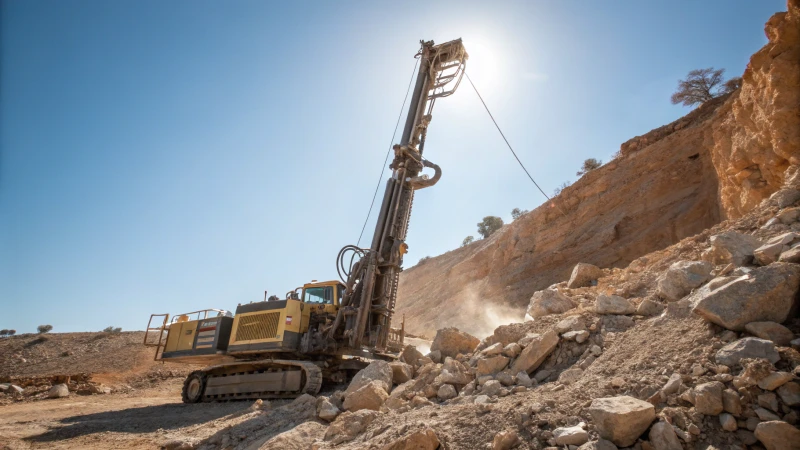
Efficiency Across Varied Terrain
I remember the first time I witnessed a DTH drill in action. We were working on a site with mixed ground conditions—a real challenge. Yet, the DTH drill amazed us all with its relentless efficiency. It kept on going without the need for frequent breaks, unlike other methods that often stop for debris removal. This continuous drilling process9 truly minimizes downtime, and I could see firsthand how it maintains high penetration rates across different terrains.
| Terrain | Challenge | DTH Solution |
|---|---|---|
| Soft Soils | Risk of collapsing holes | Precise drilling maintains stability |
| Hard Rock | Slow penetration rates | High impact force accelerates drilling |
Precision in Challenging Conditions
Precision is crucial, especially when you're involved in projects requiring exact specifications like foundations or tunnels. I've seen DTH's precision in action, ensuring straight hole drilling10 by maintaining a consistent diameter throughout the depth. This accuracy not only reduces errors but also cuts down on material wastage, making every project more efficient.
Minimal Vibration Impact
Once, while working near a bustling city center, the concern was how drilling vibrations might affect nearby structures. That's where DTH drilling's minimal vibration impact was a game-changer. Unlike other methods, it creates less vibration, which is essential for urban construction11. This feature protects structures from potential damage and keeps noise pollution at bay.
Adaptability in Depth and Diameter
I’ve also come to appreciate how adaptable DTH drilling is in terms of depth and diameter. Whether it's caissons or pile installations, this method never fails to meet the demands without sacrificing efficiency or precision. It's truly versatile.
Cost-Effectiveness through Durability
Over time, I've realized the cost-effectiveness of DTH drills, mainly due to their durability. The robust design extends the lifespan of DTH bits, minimizing replacement costs. Even in abrasive conditions, they perform exceptionally well, contributing to the cost-efficiency of projects relying on long-term drilling efficiency12. This durability means fewer interruptions and more consistent performance on site.
DTH drilling minimizes downtime in varied terrains.True
DTH's continuous process avoids interruptions, enhancing efficiency.
DTH drilling creates more vibration than other methods.False
DTH produces less vibration, making it ideal for urban areas.
How Does DTH Drilling Contribute to Cost-Effectiveness?
Have you ever wondered how something as mundane as drilling could revolutionize cost management in construction and mining?
DTH drilling enhances cost-effectiveness by boosting penetration rates, reducing the frequency of bit changes, and minimizing maintenance requirements. Its adaptability across various terrains ensures smoother operations, directly cutting down operational costs.
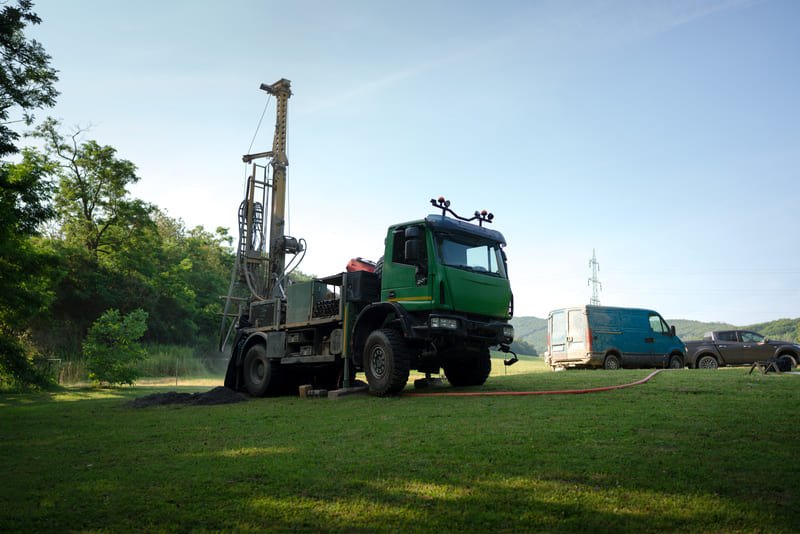
Efficiency and Speed
Let me share a personal story: I remember a project where every second counted. We were racing against the clock, and every delay felt like a punch to the gut. That's where DTH drilling came into play. Its high penetration rates were a game-changer. With the ability to continuously drill without frequent interruptions, we managed to keep labor costs and equipment idle time13 at bay. This kind of efficiency not only kept us on schedule but also meant fewer late-night headaches trying to catch up.
Maintenance and Equipment Longevity
Picture this: mid-project, and yet another drill bit needs changing. It's frustrating, right? With DTH drilling, that scenario became less frequent. The durability of DTH bits meant fewer replacements, which was a relief not just for the budget but also for my peace of mind. The simplicity of the DTH system's design led to less maintenance and operational costs over time.
| Aspect | Cost-Saving Feature |
|---|---|
| Drill Bit Durability | Fewer replacements needed |
| Equipment Maintenance | Less frequent servicing |
| Operational Downtime | Minimized due to robust design |
Versatility Across Conditions
One day, I found myself faced with an unpredictable terrain. I thought, "Great, more equipment changes." But with DTH drilling's versatility, it adapted seamlessly from soft soil to hard rock. This adaptability meant fewer equipment rentals or purchases, saving resources and preventing costly vibration damage to nearby structures.
Application Flexibility
It's amazing how DTH drilling can handle both deep and large diameter holes. This flexibility was a blessing for diverse foundation projects, reducing the need for specialized tools and simplifying logistics. Plus, the cleaner holes meant fewer complications during subsequent construction phases, keeping our project budgets intact.
Quality of Work
I've always been a stickler for quality. With DTH drilling, the precision was unparalleled—cleaner holes, consistent diameters. This precision minimized material wastage and ensured long-term structural integrity, avoiding costly repairs later on. And in urban settings? The reduced noise and vibration were a bonus for community relations. Learn more about urban benefits14.
DTH drilling minimizes equipment idle time.True
DTH drilling's continuous process reduces interruptions, lowering idle time.
Frequent drill bit changes are common in DTH drilling.False
DTH bits are durable, requiring less frequent replacements, saving costs.
What Are the Environmental Benefits of Using DTH Drilling?
Ever wondered how drilling can be eco-friendly? Let me tell you about my journey with DTH drilling and its surprising environmental perks.
DTH drilling offers significant environmental benefits by minimizing ground disturbance, reducing noise pollution, and decreasing energy consumption. Its precision helps prevent over-extraction, protecting ecosystems and conserving resources.
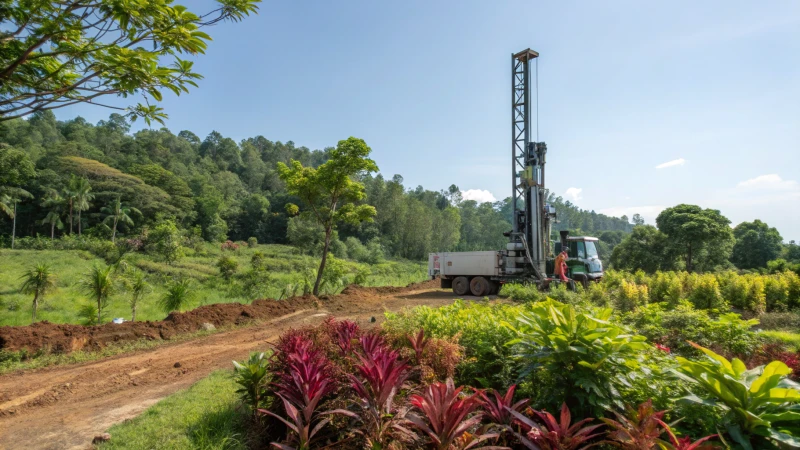
Minimizing Ground Disturbance
I remember the first time I witnessed a DTH drilling operation. It was like watching a skilled surgeon at work—careful, precise, and minimally invasive. The beauty of this technique is its ability to target extraction with surgical precision, causing less disruption to the surrounding soil and vegetation. This means that ecosystems remain largely intact, preserving the biodiversity that makes our planet so special. Unlike traditional methods that can leave behind scars of destruction, DTH drilling respects the integrity of the site, preventing extensive land degradation and helping preserve ecosystems and biodiversity. Unlike other techniques that might cause widespread destruction15, DTH drilling maintains site integrity.
Reducing Noise Pollution
Noise is more than just a nuisance; it's a genuine concern, especially when working in sensitive environments. I was on a project near a wildlife reserve once, and the quiet efficiency of DTH drilling was a game-changer. It operates at a much lower decibel level compared to its louder counterparts, sparing wildlife from the stress of noise pollution and allowing us to work in harmony with the natural surroundings. This reduction in sound helps protect wildlife and reduces the impact on human communities nearby, making it ideal for projects in urban settings16 or natural reserves.
Decreasing Energy Consumption
Efficiency isn't just about speed—it's about doing more with less. On several projects, I've seen how DTH drilling's efficient penetration rates translate into lower energy usage. This means we burn less fuel, which not only saves money but also reduces our carbon footprint. It's a win-win for both the environment and the bottom line as it supports sustainable practices17 in resource extraction.
Precision Leading to Less Over-Extraction
Precision is king in resource extraction, and DTH drilling excels at it. I recall a situation where accuracy was critical to avoid depleting local resources and impacting the surrounding habitat. Thanks to the precision of DTH drilling, we were able to extract just what we needed without excessive waste. This careful approach not only benefits the environment but also optimizes project costs by avoiding unnecessary material handling and disposal. The accuracy ensures that only necessary resources are extracted, reducing over-extraction risks which can lead to resource depletion and habitat destruction—benefiting both the environment and project economics18.
Impact on Water Systems
Water is life, and DTH drilling's careful approach means it is less likely to disrupt water tables or contaminate groundwater. I worked on a project where water protection was paramount, and knowing that our drilling paths were precise and deliberate made all the difference. By safeguarding our water systems through targeted approaches ensuring drill paths are precise, we help maintain local environmental balance which is crucial for communities depending on these resources while protecting local environmental balance19.
DTH drilling reduces noise pollution in urban areas.True
DTH drilling generates less noise, benefiting wildlife and nearby communities.
DTH drilling increases energy consumption compared to other methods.False
DTH drilling is efficient, requiring less energy, lowering its carbon footprint.
How Does DTH Drilling Compare to Other Drilling Methods?
Remember that time you had to choose the perfect tool for a job? Drilling is just like that, with DTH drilling standing out for its precision and speed.
DTH drilling, with its high penetration rates and accuracy, is ideal for diverse ground conditions, distinguishing it from rotary and top hammer methods.
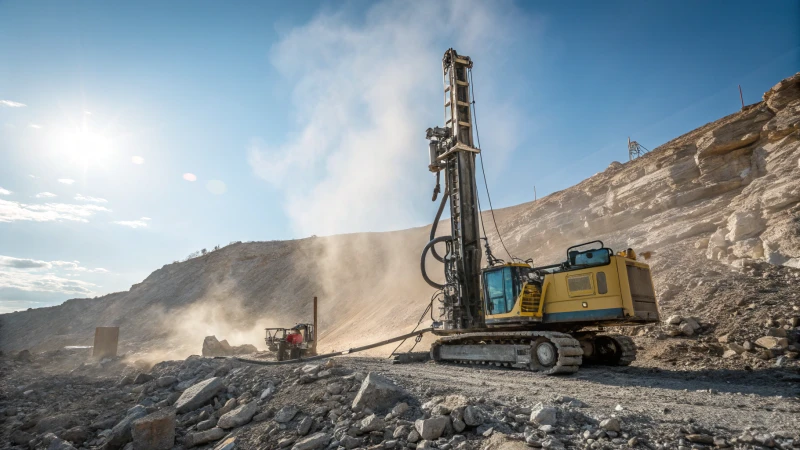
Efficiency and Speed
I remember a project where we faced an impossibly tight deadline. That's when I truly appreciated the speed of DTH drilling. It's like having a superpower when working with hard rock formations. The hammering action happens right at the drill bit, making it much faster than rotary drilling20, which relies on sheer rotation to break rock—often slower in tough spots.
Accuracy and Precision
When precision counts—like when I was working on a critical structural foundation—DTH drilling was my go-to. It ensures straight holes with consistent diameters, which are essential for structural integrity. I found that other methods, like top hammer drilling21, sometimes struggled with maintaining accuracy over long distances due to rod flexing.
Versatility Across Ground Conditions
One of the standout moments with DTH was on a site with wildly varying soil types. It handled everything from soft sediment to hard rock without missing a beat. The reduced vibration levels were also a blessing in sensitive areas, keeping disturbances to a minimum. In contrast, rotary drilling often required adaptations, like using mud solutions, to cope with different conditions.
Depth and Size Capabilities
In some projects, like the time we needed massive holes for caissons, DTH drilling's capability to create deep and large diameter holes was invaluable. While rotary methods22 can reach significant depths too, they often can't match DTH's efficiency or diameter consistency.
Here's a table summarizing depth capabilities:
| Drilling Method | Maximum Depth | Hole Diameter Range |
|---|---|---|
| DTH | 500+ meters | Up to 1 meter |
| Rotary | 200-500 meters | Variable |
Cost-Effectiveness
Over time, I’ve noticed that DTH drilling often proves more cost-effective. The drill bits are durable and require fewer changes. On the other hand, rotary drilling might seem cheaper initially but can rack up maintenance costs in abrasive conditions.
Quality of Work
I’ve always been impressed by the clean holes DTH drilling produces—an absolute necessity for subsequent construction phases like concrete pouring. This precision isn't always achievable with methods like rotary23, where hole cleanliness can vary based on material.
For more detailed analyses of each method and their applications, explore resources that discuss their unique benefits in different scenarios.
DTH drilling is faster in hard rock than rotary drilling.True
DTH's hammering mechanism above the drill bit increases speed in tough materials.
Rotary drilling creates straighter holes than DTH drilling.False
DTH drilling ensures precision and straight holes, unlike rotary methods.
Conclusion
DTH drilling enhances foundation projects with high penetration rates, precision, versatility across terrains, cost-effectiveness, and minimal environmental impact, making it ideal for efficient and reliable construction.
-
Learn how straight hole drilling is crucial for maintaining the structural integrity of foundations. ↩
-
Understand how DTH drilling excels in hard rock environments, providing reliable solutions. ↩
-
Discover how using durable drill bits can significantly cut down on operational costs. ↩
-
Learn how precise drilling supports proper load distribution, critical for structural integrity. ↩
-
Understand the risks associated with inaccurate drilling that can lead to foundation failures. ↩
-
Discover how precise drilling techniques help minimize material waste in construction. ↩
-
Find out why DTH drilling is favored for its efficiency and precision across various projects. ↩
-
Gain insights on how precision helps prevent soil collapse, ensuring site stability. ↩
-
Learn how continuous drilling enhances efficiency by reducing interruptions, crucial for projects with tight schedules. ↩
-
Understand why straight hole drilling is vital for structural integrity and material efficiency. ↩
-
Discover how reducing vibrations can protect urban structures and improve safety. ↩
-
Find strategies to ensure efficient and cost-effective drilling over extended periods. ↩
-
Understand how DTH drilling minimizes idle time by maintaining continuous operations, leading to cost savings. ↩
-
Learn about the benefits of DTH drilling in minimizing noise and vibration disturbances in urban settings. ↩
-
Understand the extent of ecological damage caused by conventional drilling techniques compared to DTH. ↩
-
Learn how DTH drilling's reduced noise pollution makes it suitable for urban environments. ↩
-
Discover how DTH drilling contributes to sustainable energy usage in various projects. ↩
-
Explore how accurate drilling can enhance both environmental and economic outcomes. ↩
-
Investigate how DTH drilling protects water resources compared to other methods. ↩
-
Explore rotary drilling's limitations to understand why DTH might be a better choice in some scenarios. ↩
-
Learn about top hammer drilling's mechanics and its comparison with DTH for better application knowledge. ↩
-
Discover rotary drilling depth capabilities to compare with DTH for specific project needs. ↩
-
Understand the factors influencing hole cleanliness in rotary drilling and how it compares to DTH. ↩







